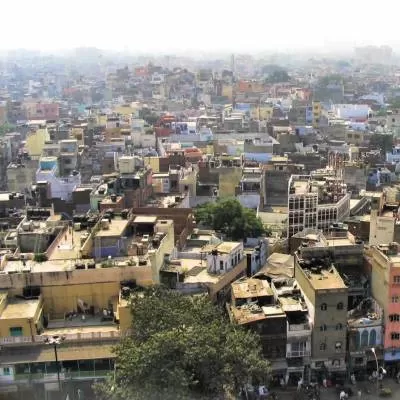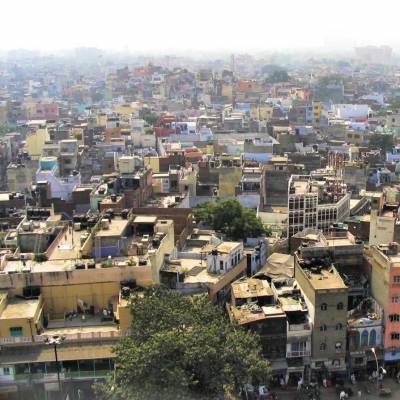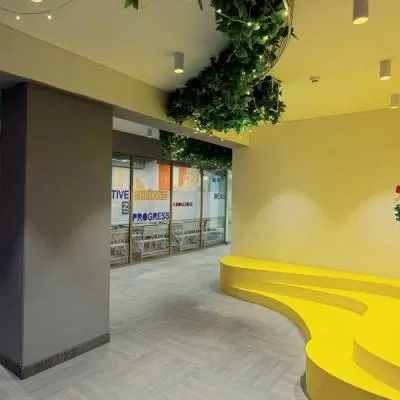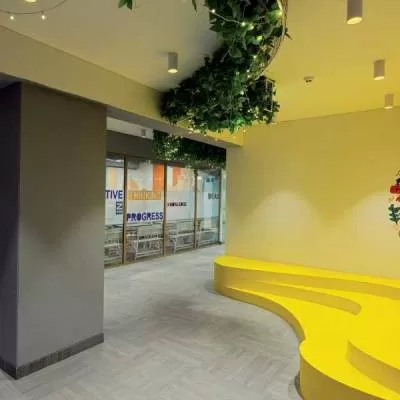- Home
- Real Estate
- 52% of MahaRERA registered residential stock remains unsold; 43% registered projects head to on-time finish
52% of MahaRERA registered residential stock remains unsold; 43% registered projects head to on-time finish
- Majority inventory in one and two-BHK configurations totalling 587,500 units.
- 33 per cent of registered developments are beyond Thane, Western Suburbs have 25 per cent of total development.
- 43 per cent of all registered projects are expected to be completed on schedule, delays beyond three years less than 15 per cent.
|
Category |
Total Stock |
Unsold |
Inventory Overhang |
Sold Unit |
% sold |
|
One-BHK |
300,094 |
156,049 |
52% |
144,045 |
48% |
|
Two-BHK |
287,450 |
152,349 |
53% |
135,102 |
47% |
|
Three-BHK |
73,755 |
37,615 |
51% |
36,140 |
49% |
|
>Three-BHK |
9,040 |
4,701 |
52% |
4,339 |
48% |
|
TOTAL |
670,339 |
350,713 |
52% |
319,626 |
48% |
Source: data collated by PropStack andCushman & Wakefield Research from MahaRERA
Maximum development concentrated in locations beyond Thane
Says Gautam Saraf, Managing Director, Mumbai, Cushman & Wakefield, “Availability of land at the lower prices is a crucial parameter that allows developers to keep the per unit prices under check. Maximum end-users are value sensitive and would like to get maximum benefits out of their purchases. Locations beyond Thane allow developers to create homes that deliver value beyond just habitat. These areas are well connected through public transport including suburban rail and roads, and give developers the confidence to launch large scale projects in these areas.”
Total sold units are estimated at 319,000. One and two bedroom configurations had the highest share of sales constituting together of 87 per cent. Sales of three bedroom configurations made up 11 per cent, while even higher configurations were a mere 1 per cent of the total inventory sold. The end-users’ affinity towards smaller configurations has been due to the high real estate prices in MMR region. Even while the capital values of affordable houses across most micro markets have not seen any drastic changes, when compared to other cities like Bengaluru, Delhi NCR and Pune, these are higher by at least 10-15 per cent for comparable projects and locations.
Says Sandeep Reddy, Director, PropStack, India, “As more and more projects register for MahaRERA, the market, including end-users, will have better access to information on developers and projects. For end-users, having all information upfront will help them to assess the final product upon receipt. While MahaRERA has its judicial job cut out, having structured and authentic information on the development sector will help in future planning and understanding as the cities of Maharashtra expand. The data will help us create better, sharper analysis of demand as well as design future supply to help avoid demand – supply mismatches.”
More homes to get delivered on promised time lines; nearly 76 per cent of all ongoing projects to be completed by 2020
As many as 42 per cent of all projects registered under MahaRERA are heading towards timely completion. As many 2,300 ongoing projects have estimated on-time or before time completion, while another 2,300 projects (43 per cent) of total projects are expected to see delays of up to 36 months as per the date. 2018 is expected to see the largest volume of the completion of under-construction projects at 1,454.
|
Committed timelines from date of commencement and expected delays |
Total Projects |
% of projects |
|
Before Time Completion |
26 |
0.5% |
|
On time Completion |
2,283 |
43% |
|
0-1 year |
940 |
17% |
|
1-2 years |
1105 |
20% |
|
2-3 years |
331 |
6% |
|
3-5 years |
413 |
8% |
|
>5 years |
324 |
6% |
Source: data collated by PropStack andCushman & Wakefield Research from MahaRERA
Traditionally, delays in projects from their committed timelines had become commonplace and buyers faced huge uncertainty on final delivery. However, with the MahaRERA norms coming in, a developer is now liable to make on-time delivery with a maximum provision of only 12 months delays. Beyond which should there be delays, the developer would have to compensate the buyers appropriately.
Adds Saraf, “Maharashtra’s early adoption of Real Estate Regulatory Act (RERA) will ensure that more projects get the requisite funding for completion of projects from domestic and international funds. While currently registered projects are still facing a backlog of challenges, these should ease out in the coming months through various funding options such as structured debts, JVs, equity investments and sales. We also expect the scheduled retail banks to make greater participation after RBI’s relaxation on possible exposure banks can have to real estate. Further, we expect the end-user purchase activities to start picking up in the next few months as RERA gives buyers a safety net for their investment. Thus, with improving sales momentum and better project management processes in place, we expect investors to show greater confidence towards the sector and increase their fund allocation to residential real estate.”
Majority inventory in one and two-BHK configurations totalling 587,500 units. 33 per cent of registered developments are beyond Thane, Western Suburbs have 25 per cent of total development. 43 per cent of all registered projects are expected to be completed on schedule, delays beyond three years less than 15 per cent.In the latest joint report by Cushman & Wakefield and Propstack, the total of number of under construction residential units registered under MahaRERA are estimated at 670,339 across 5,620 projects. Of the total units registered, as many as 350,000 units remain unsold leading to an inventory overhang of 52 per cent as of August 31, 2017. Configurations of one and two bedrooms were the most sold, which made up over 85 per cent of total sales. With over 50 per cent of the current residential inventory remaining unsold, the prices of projects have been largely stable even as the momentum in launches of new projects has been slow in MMR region. Category Total Stock Unsold Inventory Overhang Sold Unit % sold One-BHK 300,094 156,049 52% 144,045 48% Two-BHK 287,450 152,349 53% 135,102 47% Three-BHK 73,755 37,615 51% 36,140 49% >Three-BHK 9,040 4,701 52% 4,339 48% TOTAL 670,339 350,713 52% 319,626 48% Source: data collated by PropStack andCushman & Wakefield Research from MahaRERA Maximum development concentrated in locations beyond Thane The report, which analyses Mumbai Metropolitan Area (MMR) projects registered with MahaRERA by August 31, 2017, records that a total of 5,620 projects including residential and residential cum commercial projects that cover 506 million sq ft of development. Areas beyond Thane witnessed the maximum number of project launches and registration in MahaRERA at 1,835 projects constituting 33 per cent of total projects registered. Availability of land at cheaper rate along with incentives by the government to create affordable housing have been the major reasons for many developers venturing to these locations to create large-scale residential projects at affordable pricing. Despite, the distance from commercial hubs such as South Mumbai, Central Mumbai and BKC, micro-markets beyond Thane, have been throwing up viable residential options at multiple price points. Western Suburbs including the belt stretching from Bandra in the south to Borivali in the north saw the 1,400 projects making up 25 per cent of the total registrations. Eastern Suburbs (18 per cent), Navi Mumbai (12 per cent) Thane (7 per cent) and South Mumbai (5 per cent) completed the rest of the table. Says Gautam Saraf, Managing Director, Mumbai, Cushman & Wakefield, “Availability of land at the lower prices is a crucial parameter that allows developers to keep the per unit prices under check. Maximum end-users are value sensitive and would like to get maximum benefits out of their purchases. Locations beyond Thane allow developers to create homes that deliver value beyond just habitat. These areas are well connected through public transport including suburban rail and roads, and give developers the confidence to launch large scale projects in these areas.” Total sold units are estimated at 319,000. One and two bedroom configurations had the highest share of sales constituting together of 87 per cent. Sales of three bedroom configurations made up 11 per cent, while even higher configurations were a mere 1 per cent of the total inventory sold. The end-users’ affinity towards smaller configurations has been due to the high real estate prices in MMR region. Even while the capital values of affordable houses across most micro markets have not seen any drastic changes, when compared to other cities like Bengaluru, Delhi NCR and Pune, these are higher by at least 10-15 per cent for comparable projects and locations. Says Sandeep Reddy, Director, PropStack, India, “As more and more projects register for MahaRERA, the market, including end-users, will have better access to information on developers and projects. For end-users, having all information upfront will help them to assess the final product upon receipt. While MahaRERA has its judicial job cut out, having structured and authentic information on the development sector will help in future planning and understanding as the cities of Maharashtra expand. The data will help us create better, sharper analysis of demand as well as design future supply to help avoid demand – supply mismatches.” More homes to get delivered on promised time lines; nearly 76 per cent of all ongoing projects to be completed by 2020 As many as 42 per cent of all projects registered under MahaRERA are heading towards timely completion. As many 2,300 ongoing projects have estimated on-time or before time completion, while another 2,300 projects (43 per cent) of total projects are expected to see delays of up to 36 months as per the date. 2018 is expected to see the largest volume of the completion of under-construction projects at 1,454. Committed timelines from date of commencement and expected delays Total Projects % of projects Before Time Completion 26 0.5% On time Completion 2,283 43% 0-1 year 940 17% 1-2 years 1105 20% 2-3 years 331 6% 3-5 years 413 8% >5 years 324 6% Source: data collated by PropStack andCushman & Wakefield Research from MahaRERA Traditionally, delays in projects from their committed timelines had become commonplace and buyers faced huge uncertainty on final delivery. However, with the MahaRERA norms coming in, a developer is now liable to make on-time delivery with a maximum provision of only 12 months delays. Beyond which should there be delays, the developer would have to compensate the buyers appropriately. Adds Saraf, “Maharashtra’s early adoption of Real Estate Regulatory Act (RERA) will ensure that more projects get the requisite funding for completion of projects from domestic and international funds. While currently registered projects are still facing a backlog of challenges, these should ease out in the coming months through various funding options such as structured debts, JVs, equity investments and sales. We also expect the scheduled retail banks to make greater participation after RBI’s relaxation on possible exposure banks can have to real estate. Further, we expect the end-user purchase activities to start picking up in the next few months as RERA gives buyers a safety net for their investment. Thus, with improving sales momentum and better project management processes in place, we expect investors to show greater confidence towards the sector and increase their fund allocation to residential real estate.”




















